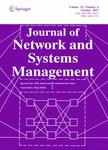版权所有:内蒙古大学图书馆 技术提供:维普资讯• 智图
内蒙古自治区呼和浩特市赛罕区大学西街235号 邮编: 010021

作者机构:Univ Ghent IDLab Dept Informat Technol Imec iGent TowerTechnol Pk Zwijnaarde 126 B-9052 Ghent Belgium
出 版 物:《JOURNAL OF NETWORK AND SYSTEMS MANAGEMENT》 (网络与系统管理杂志)
年 卷 期:2020年第28卷第4期
页 面:1482-1521页
核心收录:
学科分类:0810[工学-信息与通信工程] 08[工学] 0812[工学-计算机科学与技术(可授工学、理学学位)]
基 金:European Commission under the Horizon 2020 programme European Commission under 5G-PPP Phase2 programme UGent BOF/GOA project "Autonomic Networked Multimedia Systems" H2020 - Industrial Leadership [761557, 761493] Funding Source: H2020 - Industrial Leadership
主 题:Sampling heuristic Network Function Virtualization Performance profiling Machine learning Regression
摘 要:Modern network services make increasing use of virtualized compute and network resources. This is enabled by the growing availability of softwarized network functions, which take on major roles in the total traffic flow (such as caching, routing or as firewall). To ensure reliable operation of its services, the service provider needs a good understanding of the performance of the deployed softwarized network functions. Ideally, the service performance should be predictable, given a certain input workload and a set of allocated (virtualized) resources (such as vCPUs and bandwidth). This helps to estimate more accurately how much resources are needed to operate the service within its performance specifications. To predict its performance, the network function should be profiled in the whole range of possible input workloads and resource configurations. However, this input can span a large space of multiple parameters and many combinations to test, resulting in an expensive and overextended measurement period. To mitigate this, we present a profiling framework and a sampling heuristic to help select both workload and resource configurations to test. Additionally, we compare several machine-learning based methods for the best prediction accuracy, in combination with the sampling heuristic. As a result, we obtain a reduced dataset which can still model the performance of the network functions with adequate accuracy, while requiring less profiling time. Compared to uniform sampling, our tests show that the heuristic achieves the same modeling accuracy with up to five times less samples.